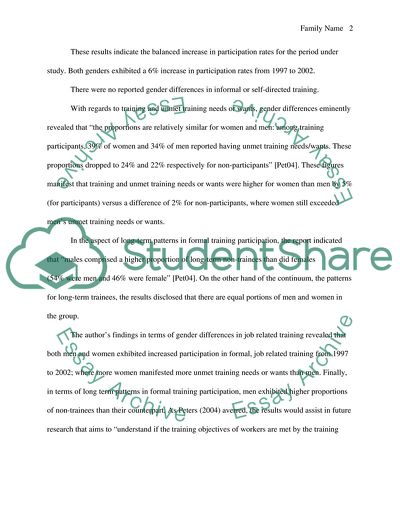What was the gender difference in job related training between 1997 Article. Retrieved from https://studentshare.org/education/1579310-what-was-the-gender-difference-in-job-related-training-between-1997-and-2002
What Was the Gender Difference in Job Related Training Between 1997 Article. https://studentshare.org/education/1579310-what-was-the-gender-difference-in-job-related-training-between-1997-and-2002.


